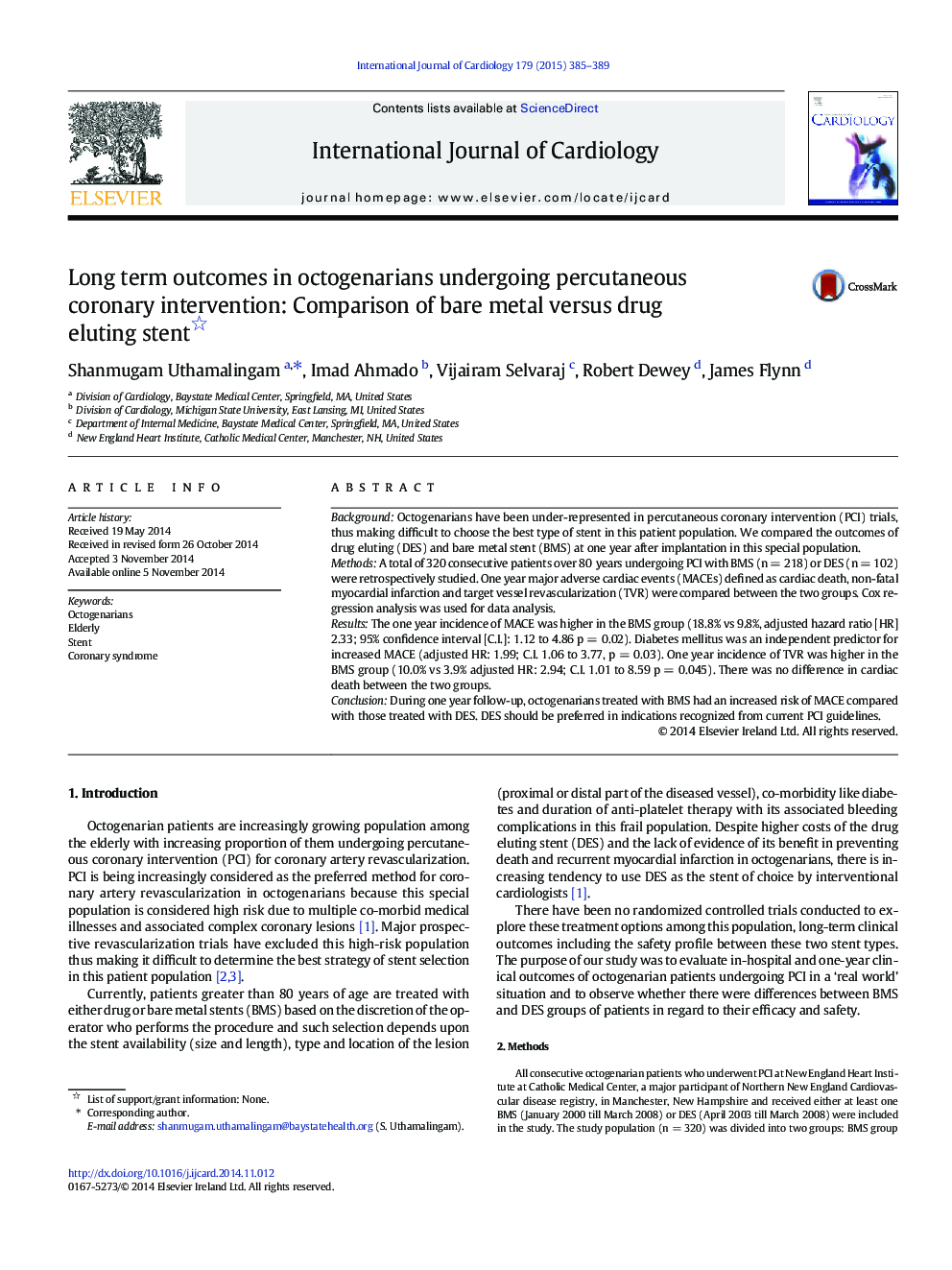| Article ID | Journal | Published Year | Pages | File Type |
|---|---|---|---|---|
| 5969023 | International Journal of Cardiology | 2015 | 5 Pages |
â¢We compare outcomes in octogenarians receiving BMS versus DES.â¢Cumulative MACE outcomes are noted to be lower in patients receiving DES at 1 year.â¢No difference in all-cause mortality was noted between stents.
BackgroundOctogenarians have been under-represented in percutaneous coronary intervention (PCI) trials, thus making difficult to choose the best type of stent in this patient population. We compared the outcomes of drug eluting (DES) and bare metal stent (BMS) at one year after implantation in this special population.MethodsA total of 320 consecutive patients over 80 years undergoing PCI with BMS (n = 218) or DES (n = 102) were retrospectively studied. One year major adverse cardiac events (MACEs) defined as cardiac death, non-fatal myocardial infarction and target vessel revascularization (TVR) were compared between the two groups. Cox regression analysis was used for data analysis.ResultsThe one year incidence of MACE was higher in the BMS group (18.8% vs 9.8%, adjusted hazard ratio [HR] 2.33; 95% confidence interval [C.I.]: 1.12 to 4.86 p = 0.02). Diabetes mellitus was an independent predictor for increased MACE (adjusted HR: 1.99; C.I. 1.06 to 3.77, p = 0.03). One year incidence of TVR was higher in the BMS group (10.0% vs 3.9% adjusted HR: 2.94; C.I. 1.01 to 8.59 p = 0.045). There was no difference in cardiac death between the two groups.ConclusionDuring one year follow-up, octogenarians treated with BMS had an increased risk of MACE compared with those treated with DES. DES should be preferred in indications recognized from current PCI guidelines.
